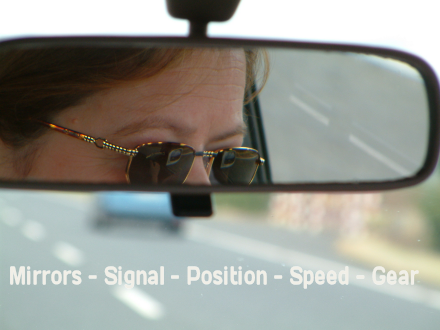Using a routine approach
With the speed and density of modern traffic, situations can change rapidly. because of this it's useful to know where you are, what's around you and what you can safely do next if you want to stay alive.
By using a 'hazard routine', you can safely achieve all of the things mentioned above.
Hazard routines are essential for advanced driving tests, they demonstrate a disciplined and organised drive.
A hazard routine is simply a drill, or system of actions, that you will use every time you approach a hazard.
It is common amongst the 'advanced driving' fraternity to use the police term 'system of vehicle control' when discussing hazard routines, both terms will be used in this section.
A hazard is anything that causes you to change your speed or direction, for example, junctions, parked cars, animals on the road, etcetera.
By taking a routine approach, you will be sure that it is safe to carry out any action that may be necessary to deal with the hazard safely.
The basic routine for driving in the UK is Mirrors Signal Manoeuvre, usually referred to as the MSM routine, but you will find different 'systems of vehicle control' depending on which books you read. The systems are all much the same...
The important thing is not which routine you use – but how well you use it.
Dealing with hazards on the road is a constant process of gathering information and taking appropriate action. As with other things in life, to do this efficiently it is a good idea to have a system. For example, a system for grocery shopping might be:
- Check the larder to find out what I need to buy
- Consider other family members
- Make a list
- Decide where to purchase the items on the list
- Make the shopping trip
You might not realise it consciously, but your whole life is made up of routines. The 'hazard routine' is simply a method of ensuring that you negotiate the roads safely.
In this section we will consider each element of the 'hazard routine' and why it is important – in doing this we will also give a brief overview of different routines.
If you have not already done so, print and complete your Training Outcomes Worksheet for this unit - you might wish to revise your outcomes before doing the practical exercises.
Next: Step 2 - More than one system.
